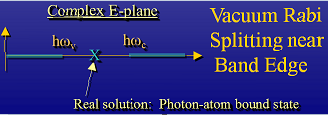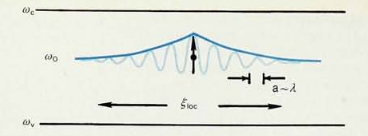


Some consequences include zero-threshold laser activity [Phys. Rev. Lett. 74, 3419 (1995)], low threshold nonlinear optical response [Phys. Rev. Lett. 76, 2484 (1996)], all-optical transistor action [Phys. Rev. Lett. 78, 1888 (1997)], and single-atom optical memory [Phys. Rev. Lett. 79, 5238 (1997)].
A very striking discovery [Physical Review Letters 103, 233601 (2009)] is that nearly complete coherent control of the excitation dynamics of quantum dots by picosecond optical pulses in a photonic band gap waveguide. In particular it is possible to achieve and maintain complete inversion of quantum dots with femto-joule optical pulses. This provides a basis for a multi-wavelength-channel, all-optical-transistor in a photonic band gap microchip that can perform optical logic and optical information processing.
